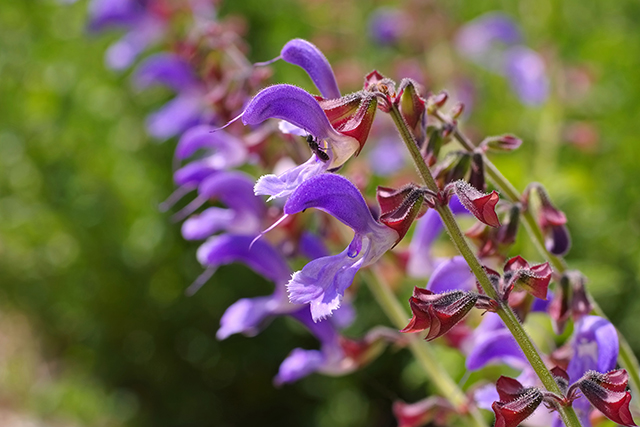Red sage, also known as Chinese sage, found to protect the kidneys of people with severe acute pancreatitis and obstructive jaundice
01/21/2018 / By Russel Davis

A study published in the African Journal of Traditional, Complementary and Alternative Medicines revealed that Salvia miltiorrhiza, more commonly known as red sage or danshen in Chinese, may protect the kidneys in patients with severe acute pancreatitis (SAP) and obstructive jaundice (OJ). A team of Chinese researchers examined 288 rat models of SAP and OJ as part of research.
High levels of serum creatinine in the blood indicate that the kidneys aren’t in optimal health. The researchers found that serum CREA levels were significantly lower in treated SAP models at six and 12 hours after operation compared with the controls. Likewise, treated OJ models had significantly lower serum CREA levels at 21 and 28 days after operation. The scientists also observed that the staining intensity of Bax protein of kidney was lower in the treated SAP group than the controls at three and six hours post operation. Furthermore, the experts touted that the apoptosis index in the kidney of OJ rats was relatively lower in the treatment group compared with the controls.
“Salvia miltiorrhizae is able to significantly improve the pathological changes in the kidney of SAP and OJ rats, which is mainly manifested as reducing inflammatory cell infiltration, protecting glomerular capillary, decreasing the shedding and necrosis of renal tubular epithelial cells, and stabilizing the structure of cell organelles,” the researchers concluded.
“Additionally, Salvia miltiorrhizae also has some protective effects on excessive apoptosis-induced renal injury in SAP and OJ through downregulating the expression of Bax protein. This protective effect is beneficial to the recovery of renal function. Salvia miltiorrhizae has features of diverse pharmacological actions, low cost and few side-effects, it has better application prospect and economic values, and deserves to be popularized,” the experts added.
More studies demonstrate red sage’s benefits on kidney health
The recent findings add to mounting evidence of red sage’s beneficial effects on kidney health. For instance, a meta-analysis published in the Journal of Alternative and Complementary Medicine revealed that taking red sage formulation alone or in combination with other drug treatment may mitigate the risk of renal disease in children with Henoch-Schönlein Purpura (HSP). (Related: Five Elements And Five Reasons We Need Traditional Chinese Medicine In America.)
The researchers assessed five clinical trials with a cohort population of 513 children aged two to 14 years old. The scientists observed that taking red sage formulations – including injections and tablets – as an add-on to symptomatic therapy resulted in reduced likelihood of developing renal disease at six to 12 months after treatment compared with symptomatic therapy alone. The experts did not note any adverse medical events following the treatment.
“Danshen formulations may help prevent renal disease in children with HSP without serious side-effects… Large, properly randomized, placebo-controlled, double-blind studies are needed to substantiate its use,” the researchers wrote.
Another animal study demonstrated that red sage may help mitigate the effects of excessive iron that often results in kidney tissue damage. According to the study, iron-overloaded mice models given either a low-dose or a high-dose red sage formulation exhibited significant reductions in iron levels in the kidney and marked improvements in body weight.
The results also showed that treatment with red sage formulations helped decrease the concentrations of blood urea nitrogen, creatinine and malondialdehyde. Furthermore, the scientists observed that red sage formulations helped boost glutathione peroxidase and superoxide dismutase activities, and prevent the onset of kidney cell deaths.
“Our results preliminarily demonstrated that Danshen injection could significantly restore abnormal function and ameliorate the pathological changes of the kidney in iron-overloaded mice. These remarkable protective effects against renal injury caused by excess iron may be attributed to the prevention of iron deposition and inhibition of lipid peroxidation and nephrocyte apoptosis,” the scientists said.
The findings were published in the journal PLOS One. Find more news coverage of medicinal herbs at Herbs.news.
Sources include:
Tagged Under: alternative medicine, Chinese medicine, Chinese sage, dan shen, herbal medicine, Herbs, kidney health, medicinal herb, medicinal herbs, medicinal plants, natural remedies, red sage




















